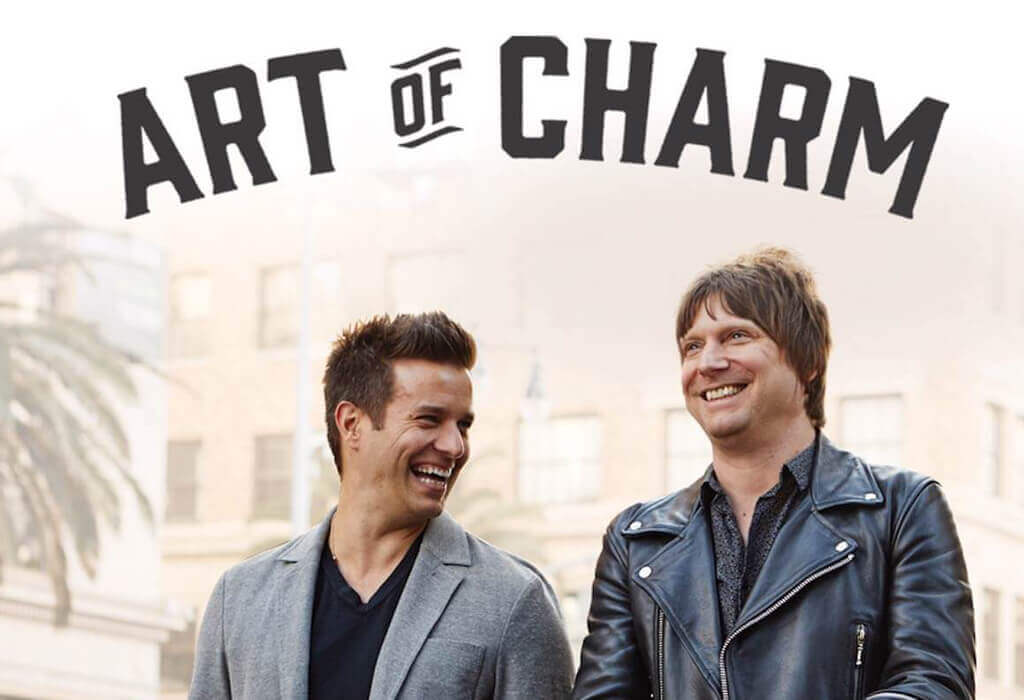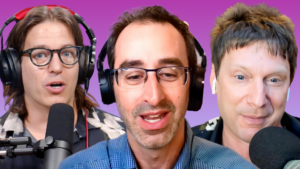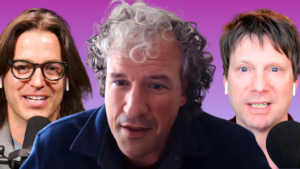Why is it that tomorrow always seems like the best time to start a project? It’s hard to stop making excuses sometimes. Maybe we feel like we’re not quite ready. Or maybe we believe our idea won’t turn out as solid as we first thought. More often than not, we’ll spend more time thinking about doing something than actually doing it.
Tomorrow, right?
Imagine a 350 pound MMA fighter, legs of steel, wearing steel-toe boots. Now imagine a swift kick in the ass from him, knocking away your excuses and rationalizations for not working on your project. Then, imagine him holding out his hand, helping you up from your fall, and — having utterly destroyed your bullshit — telling you to go back into the world and make something extraordinary.
Whether that project is entrepreneurial, artistic, humanitarian, or just a simple tweak to your work habits, that’s what reading The War of Art feels like. And that’s why it’s the perfect book to start off the new year.
Table of contents
First, let me preface this book review/personal reflection with a few things:
- No book, movie, TED talk, audiobook, or YouTube video containing clips from The Pursuit of Happyness is going to change your life. Motivational media might set the wheels in motion, but you, and only you, have the ability to make a decision to sit down and follow through on something. You just need to stop making excuses and start taking action.
- If you are an unabashed cynic like me, you probably perceive most “self-help” literature as a scam. The only person who really succeeds is the author, who sells thousands of copies of a book full of clichés. Let’s just call that out right now.
- The War of Art is less than 160 pages, and many of these pages are less than half-full (or, more than half-empty, but — New Year — let’s be positive, right?). It’s likely that this book will be more portable than the iPhone 8 Plus. Your immediate impression might be: Am I really going to get my money’s worth? Or, why didn’t I pack something else to read for this trans-Atlantic flight?
Given all that, why would I recommend this book so enthusiastically?
It’s a fair question, and one that deserves a quick personal history…
Stumbling into the War
We could not be any more different.
I’m the son of conservative immigrant parents, ingrained with the values of formal education, structured work, and a steady job. She’s the daughter of a prominent contemporary artist and a yoga teacher, raised in what in what could conservatively be called a “bohemian” household.
We met up in New York City a few years ago, when I was slaving away as a management consultant. Over dinner, I complained to her about my job — the brutal hours, the creative frustration — and she talked about the fun, exciting, creative projects she was working on.
“You know what you should read?” she asked. It was the first time I had heard of The War of Art. According to her, “you’re suffering from blocks,” which sounded less like something I actually had and more like a disease passed around by promiscuous LEGO characters.
I brushed off the suggestion, and we hung out the rest of the night before parting ways for months, like we always did. I loved these nights out – I felt like Don Draper visiting California, discovering a new world beyond the monotony of the corporate grind. Her friends would sit on street corners and smoke cigarettes in their genuinely ripped up t-shirts, while I would stand there talking music and literature with them, arms awkwardly folded in my tailored dress shirts. I felt like a corporate tool, but with another, more interesting side to me, a side that was dormant and shut down and frustrated.
“Nothing to lose, right?” I thought as I bought the book online back at the hotel. I arrived home to Chicago a few days later to find a box waiting at my doorstep. “So this is going to change my life,” I thought, opening up an is-this-really-necessary large Amazon Prime box to find an are-you-kidding sized book.
I got in bed one chilly Saturday afternoon and read it all in one shot. I couldn’t put the book down. Something on every page resonated deep inside. When I finished, I felt like I had just saved thousands in dollars in therapy and commissioned a psychologist to write a personal field manual.
That was the first step.
Part 1: Defining the Enemy
“Most of us have two lives. The life we live, and the unlived life within us. Between the two stands Resistance.” (Pressfield, 1)
Pressfield spends 52 pages on what he calls “Resistance,” with a capital R.
These are a number of thoughts and behaviors that are lumped together as the universal force that holds us back and keeps us from working and creating. There’s nothing earth shattering here, but by using his own anecdotes and imagining real-world applications, he has a way of bringing the phenomenon of Resistance to life. Every page left me thinking about the ways in which I encounter Resistance and the excuses I tell myself to avoid working on the things that mean the most to me.
But Pressfield isn’t just talking about “Art.” He’s talking about the Resistance we all experience, in one way or another, when we consider pursuing, as he puts it, “any action that rejects immediate gratification in favor of long-term growth, health, or integrity.” Working out, dieting, or even something as simple and prosaic as committing to growing a beard – these are the kinds of things we feel in our heart we can do, but become our own worst enemies when given the actual opportunity.
Everything in my life was perfectly comfortable before I found this book — or, more accurately, when it found me — but I knew there were creative desires I had suppressed. I’ve always enjoyed writing, but was afraid to put myself out there, doubting whether I could connect with an audience. I’ve played the drums since I was 11 — in fact, it was the one thing in my life I could do for hours without noticing a minute had gone by — but I had relegated it to a “hobby to pick up again later in life.”
I realized that these were two seductive and powerful forms of Resistance.
So now that we’ve identified some of the reasons why we don’t work, how can we get ourselves to overcome them?
Part 2: Turning Pro
“The professional shuts up. She doesn’t talk about it. She does her work.” (Pressfield, 78)
If the first section of the book was a gentle push into thought, the second is a full-blown shove into action. According to Pressfield, what separates those who succumb to Resistance and those who battle it head-on is the distinction between the amateur and the professional.
Put simply, the amateur talks about it while the professional does it.
The amateur screenwriter has a brilliant idea, one his friends have heard about for years but have never actually seen. Meanwhile, the professional screenwriter is behind the computer, writing screenplay after screenplay, treating the craft with love, but like it’s his job. It might be bad screenplay after bad screenplay, but 90% of something is better than 100% of nothing.
Bottom line: An amateur fantasizes. A professional gets to work.
Once again, this chapter revealed my own habits. Ever since college, once I was no longer “required” to write or was not in an organized musical group, I had treated my creative endeavors like an amateur. I rarely wrote or practiced, never holding myself to a schedule or laying out any goals.
Beyond basic habits, the book forced me to reassess the entire paradigm upon which I’ve conceived “art” as a part of “normal life.” Simply put, I thought of art as an indulgence, a hobby, a nice-to-have, and sometimes even a distraction. It never occurred to me that art — meaning any act of personal creation — could actually be a real part of my everyday existence.
How many of us are led to believe that once you graduate college, the fun is over, and real life begins? We convince ourselves into suppressing our creative aspirations in order to focus on the 9 to 5, the savings account, the IRA, the spouse, and the family.
Now, I’m not advocating for you to quit your job, divorce your wife, and move to Paris with a stock of canvases and acrylic paint to become the next Monet (although it’s not far from what I ended up doing — but that’s for another time.) What I came to realize is that if we treat art and creativity as we would treat any profession, with the same amount of tenacity and participation, it isn’t crazy to discover that we can be successful.
It might just start out as a “side-hustle.” It might just mean an hour of writing instead of an hour of Netflix reruns. It might mean turning a Sunday afternoon of football and overeating into a workout or hike.
But the idea of “becoming a professional” means turning tomorrow into today.
I knew that if I wanted to succeed in the fields that really mattered to me, it was time to stop making excuses and get to work.
Part 3: Higher Realm
“There is magic to effacing our human arrogance and humbly entreating help from a source we cannot see, hear, touch, or smell.” (Pressfield 119)
In the last section, Pressfield examines a much the more existential aspect of creativity ranging from the relationship between the Ego and Self to his invocation of spirits and prayers. I’ll be honest — here’s where I lost Pressfield a little. (The only spirits I believe in are tequila and whiskey.)
I had trouble identifying with parts of this section the first time around. After working so hard to prove that our ability to create comes from within, Pressfield seems to contradict himself by looking to external factors for motivation. Although I can respect his opinion that religious and spiritual forces “guide” our creative magic, it just wasn’t one I could reconcile with my personal beliefs.
But the beauty of the book is that Pressfield encourages you to interpret things in your own way. And while the first time I read this section I was skeptical, I now find myself discovering new meanings. To me, it’s not a “spirit” that drives us to work, but a force of ambition, satisfaction, and pride that recognizes progress and motivates us to keep working.
I first read this at 23 years old, at a time in my life when my job would soon require me to make a very serious commitment (2 years of business school + 2 years back at the job, or a lifetime of debt). My friends were beginning to get engaged and settle down and every external force in my life seemed to point towards choosing a path of stability.
And yet all I could think was, “I’m just getting started.” I knew I couldn’t live with myself if I didn’t take the risks I had been considering for years, but I also dreaded the possibility of failure and the uncertainties that come with it, which seemed daunting in contrast to the stable path I was on.
I’m still conquering the war of art, knee-deep in the trenches. But I do know that as I’ve progressed from treating my creativity like an amateur to working at it like a professional, I continue to remove my Ego from the equation. I’m less concerned about what people think of me and what I’m doing and more driven by knowing that my Self is doing what is most natural.
A Plan of Attack
I’m writing this in early 2015, more than three years since reading the book for the first time. I say “first time,” because I revisit the book every few months, finding new experiences to relate to, new ways Resistance has manifested itself, and new reasons to continue being a professional to achieve my goals. The journey is endless.
But I can point to real progress. Since reading the book, I’ve started a business, several websites, and rededicated myself to music. In a few weeks, I’ll be launching a site that combines nearly everything I’ve learned, practiced, and experienced into one project. It might fail in the traditional sense, but I’m not worried about that right now.
Because while I’m not yet where I want to be, I’m finally doing what I want to do. And more importantly, I am becoming who I want to be by working how I should have been working all along. Resistance still gets me every day – I still have insidious thoughts and often doubt myself. But I know that I’m doing what I love, what drives me. And I show up every day, putting in my hours – to my writing, to my business, to my music – because there’s progress even in the bad hours, and every hour counts.
I still believe that no one book can change your life, but The War of Art was a keystone that tied together a web of disparate thoughts into action. And for that reason, I can confidently say that it kicked my ass. And I hope it kicks yours too.
As Pressfield reminds us…
“Don’t cheat us of your contribution. Give us what you’ve got.” (Pressfield 165)
So stop making excuses and make it happen.



